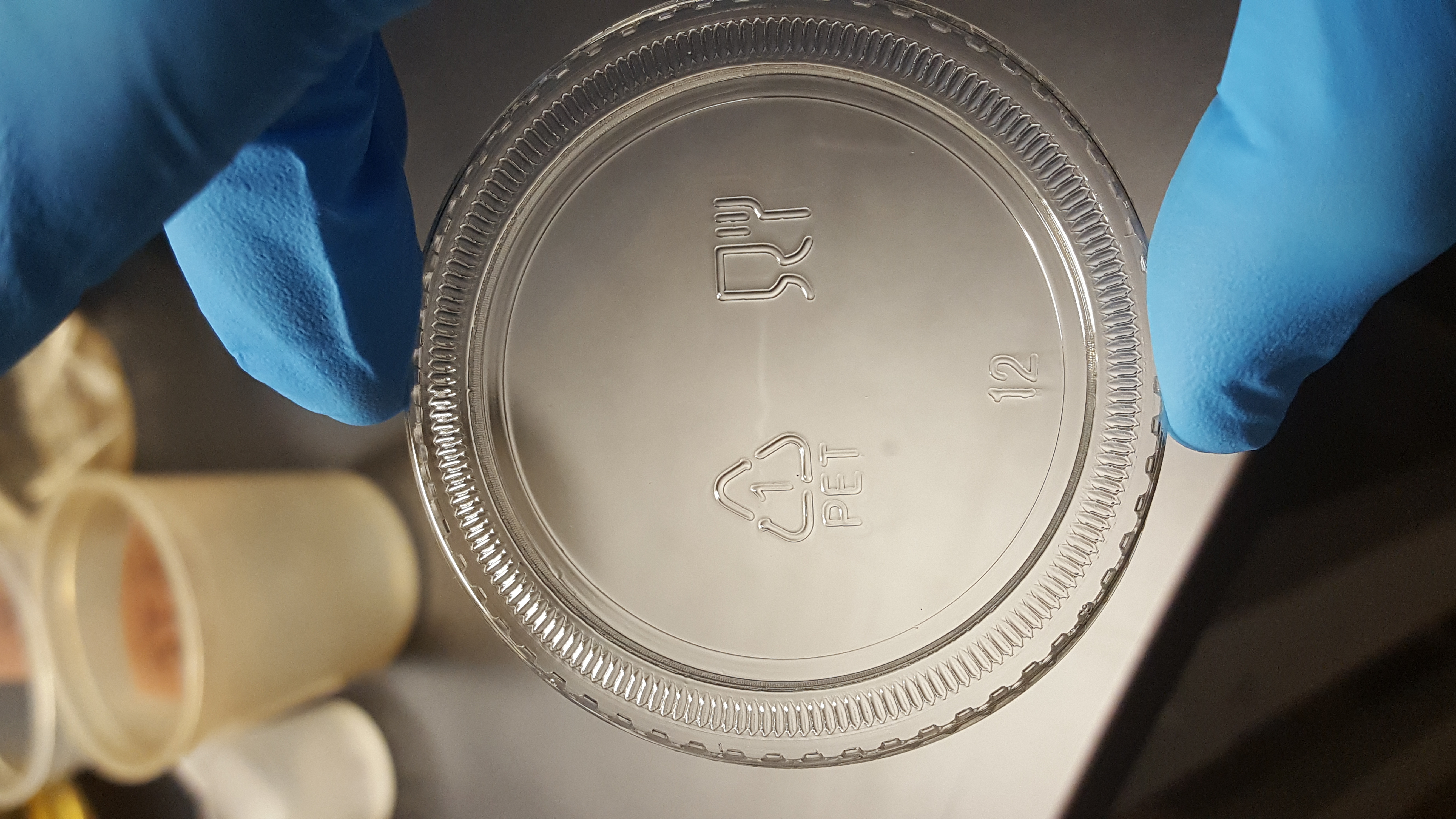Saving the Baltimore Inner Harbor
Is E. coli the answer?
Experiments
We are evaluating our parts by verifying that they can be used to degrade PET plastic. We are setting up an experiment in which we will test for the the ability of E.coli bacteria engineered with each part to degrade PET plastic. Glass culture tubes were set up containing LB media and small squares of PET plastic that had been weighed beforehand. The approximate dimensions of the plastic squares were 20x15x0.5mm, and they weighed between 101 and 89 mg. After the bacteria with the gene have been added, the plastic will be weighed twice a week to check for lost material. Some tubes will be incubated at 30 degrees Celsius because that is the best growth temperature for the Ideonealla bacteria, and some will be incubated at 37 degrees Celsius because that is the best temperature for E. coli.




Protocols
Preparing an Agarose Gel
Add 0.8 g agarose powder to 100 mL 1x TAE buffer in a flask. Microwave the flask until the liquid starts to bubble, then take out and swirl. Repeat until the agarose is fully dissolved. When flask is cool enough to hold, add 8 uL of gel red to the solution and pour the gel into a mold. This method was adjusted to make small and large gels.
Plasmid Miniprep
All minipreps were done according to the instructions in the QIAprep Spin Miniprep Kit using a microcentrifuge.
PCR Amplification
Mix the specified amounts of each reaction component in a microcentrifuge tube. Vortex lightly and centrifuge briefly, then transfer to a PCR tube and place in the PCR machine with the following PCR settings:
Cycle 1 (Repeat 1 time)- 98ºC - 30 sec
- 98ºC - 10 sec
- 60ºC - 20 sec
- 72ºC - 40 sec
- 72ºC - 10 min
- 4ºC - infinity
PCR Purification
All PCR purifications were done according to the instructions in the QIAquick PCR Purification Kit using a microcentrifuge.
Restriction Digest
The basic protocol for restriction digest is as follows. All deviations from this protocol are noted.
Mix the following reactants in a microcentrifuge tube.- 50 uL DNA (10 ng/uL)
- 6 uL CutSmart
- 1.6 uL dIH2O
- 1.2 uL EcoR1
- 1.2 uL Pst1
Incubate at 37ºC for 50 min, then at 50º for 10 min.
Ligation
The basic protocol is as follows. Deviations from this protocol are noted.
Mix the following ingredients in a clean microcentrifuge tube:- 7 uL dIH2O
- 2 uL vector
- 8 uL insert
- 2 uL Ligase Buffer
- 1 uL T4 Ligase enzyme
Incubate at room temperature for 1 hour.
Transformation
Thaw out the competent E.coli cells on ice, and pre-chill the empty microcentrifuge tubes on ice. Prepare 6 glass recovery tubes with 950 uL media.
- Add 50 uL of cells to each of the chilled microcentrifuge tubes
- Add 5 uL (unless otherwise specified) of ligation to each microcentrifuge tube
- Incubate the tubes on ice for 20 min
- Heat shock the cells at 42ºC for 30 sec, then immediately put them on ice for 2 min to recover
- Transfer the cells to the prepared recovery tubes and put in the shaker for 1 hour at 37ºC
Colony PCR
This protocol makes 22 reactions worth of master mix, but the same proportions were used to make different amounts.
Master Mix:- 316.8 uL water
- 44 uL 10X Taq buffer
- 33 uL dNTPs (2.5 uM)
- 22 uL forward primer (20 uM)
- 22 uL reverse primer (20 uM)
- 0.1 uL Taq enzyme
Label fresh culture plates with the type of ligation to be used. Label PCR tubes to correspond with the plates, and add 19 uL of master mix to each tube. Take a sterile toothpick and touch it to one of the colonies. Dip it into a PCR tube and swirl it around for a few seconds, then streak the remaining cells from that toothpick onto the matching plate. Repeat this for all of the colonies to be screened, and place the PCR tubes in a PCR machine with the specified settings.

